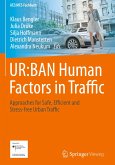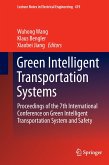As technology improves, so does the sophistication of driving simulators. Meanwhile, as the volume of traffic increases, simulators are being seen as a real addition to the driving trainer's armory. This book explains the basics of education and training using simulators and their ability to improve safety on our streets. Käppler shows that they can be used for documentation, data acquisition, data analysis, evaluation, and modeling as well as for simple training.
A good decade after the temporary end of attempts to make driving simulation into an accepted, productive teaching and training technology, new possibilities and chances are on the horizon, motivated by current EU legislation. The author has been involved, in terms of technology and content, in the development of driving simulators and has tracked their progress. This book attempts to take driving si- lation seriously as a technology for teaching and training, to demonstrate possible paths for future development and to promote the formation of a community as a basis for future success. The author would like to thank all the institutions, companies and universities involved for providing him with material, and for their constant willingness to d- cuss matters. Special thanks go to Prof. R. Bernotat and the Research Establishment for Applied Sciences (Forschungsgesellschaft fur ¨ Angewandte Naturwissenschaften e.V.) in Wachtberg, Prof. H.-P. Willumeit and Berlin University of Technology, and all staff and students, for the years of factual, nancial, technological and personal support. On behalf of the above I would like to thank the translator, Anne Koth. Although the masculine gender has been chosen in the text for convenience, the information applies equally to the feminine gender.
A good decade after the temporary end of attempts to make driving simulation into an accepted, productive teaching and training technology, new possibilities and chances are on the horizon, motivated by current EU legislation. The author has been involved, in terms of technology and content, in the development of driving simulators and has tracked their progress. This book attempts to take driving si- lation seriously as a technology for teaching and training, to demonstrate possible paths for future development and to promote the formation of a community as a basis for future success. The author would like to thank all the institutions, companies and universities involved for providing him with material, and for their constant willingness to d- cuss matters. Special thanks go to Prof. R. Bernotat and the Research Establishment for Applied Sciences (Forschungsgesellschaft fur ¨ Angewandte Naturwissenschaften e.V.) in Wachtberg, Prof. H.-P. Willumeit and Berlin University of Technology, and all staff and students, for the years of factual, nancial, technological and personal support. On behalf of the above I would like to thank the translator, Anne Koth. Although the masculine gender has been chosen in the text for convenience, the information applies equally to the feminine gender.








